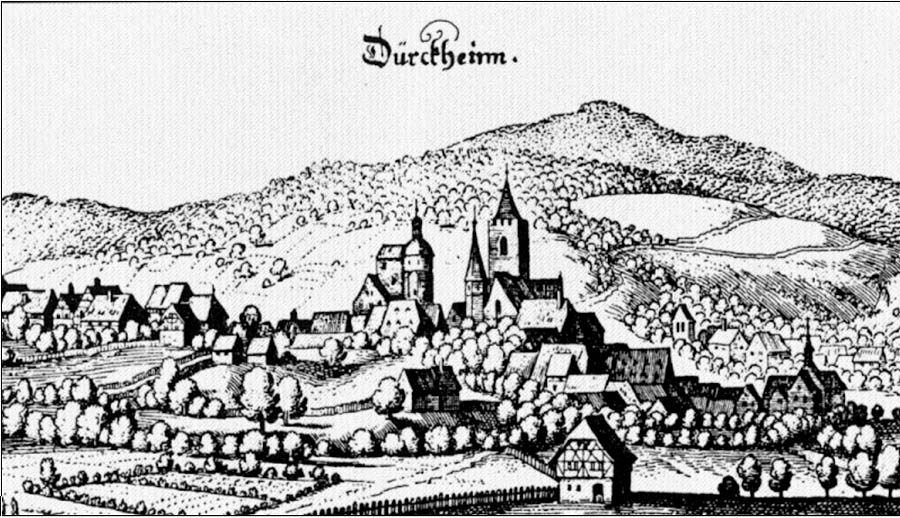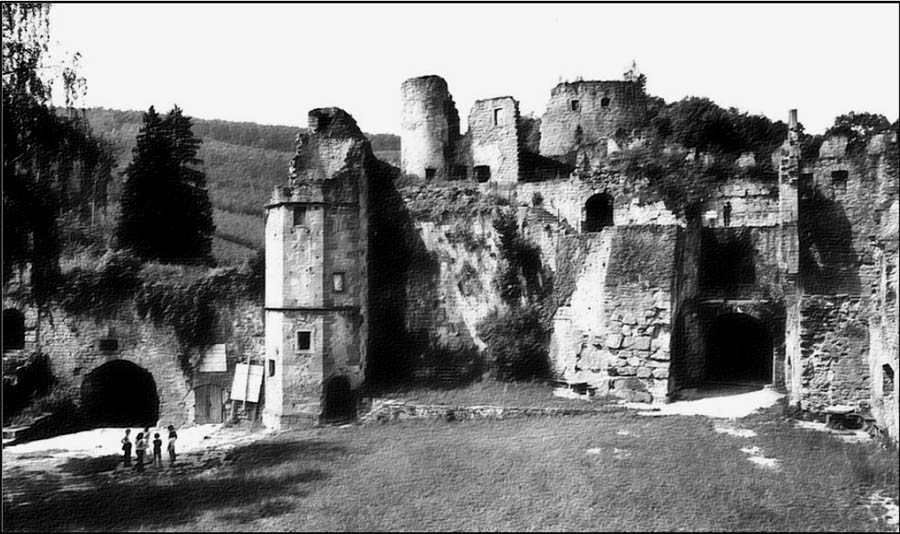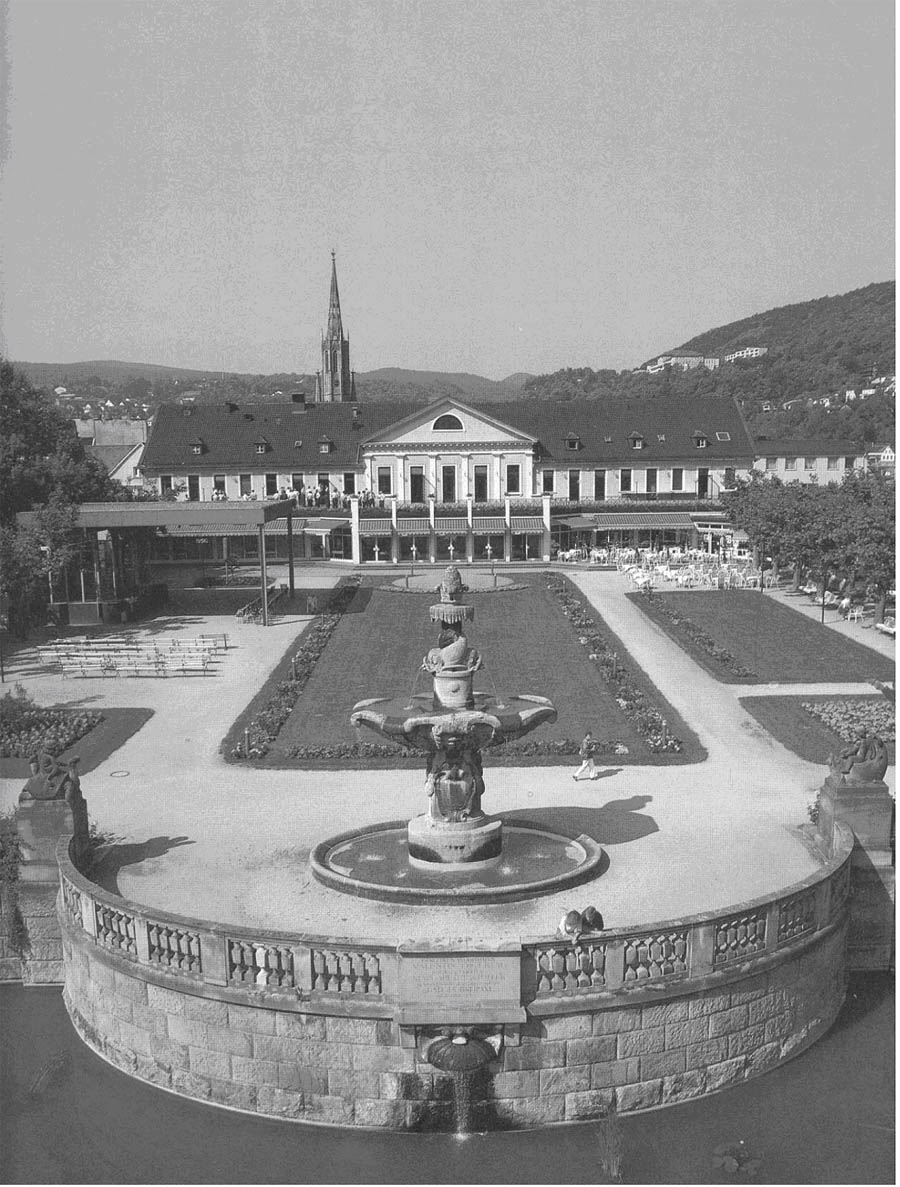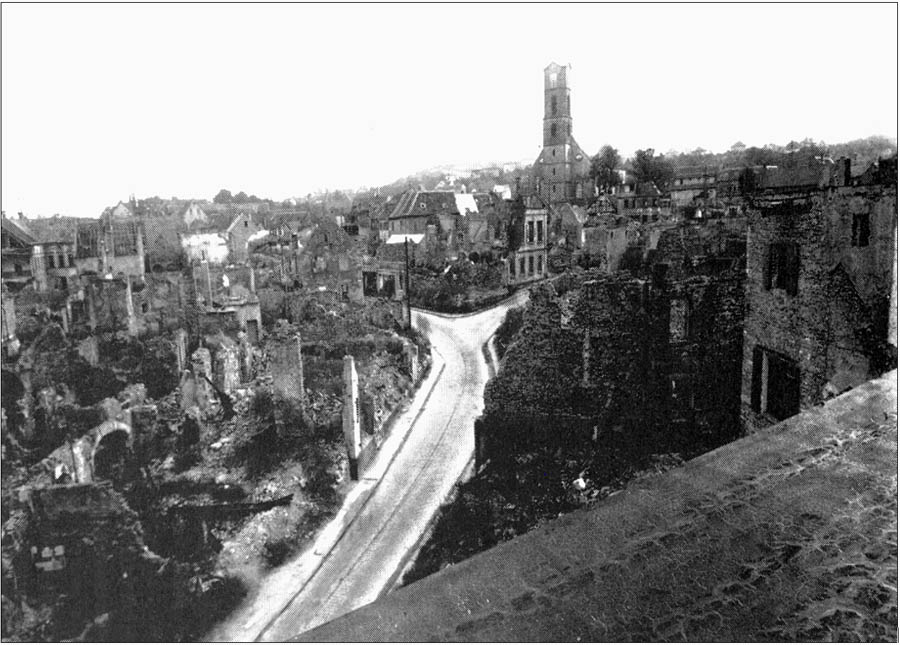Dürkheim’s Colorful Past—A Retrospective View
By Georg Feldmann
continued...

An engraving of Dürkheim as it appeared ca 1650. The ancient fortress is shown at the left of St. Johannis Church.
But these beautiful times did not last for Dürkheim. The Palace at Dürkheim and the Castle at Hardenburg were burned down in early 1794 by French revolutionary troops.

Hardenburg Castle ruin near Dürkheim
Much suffering came with the revolutionary wars that followed. Dürkheim, along with all the rest of the area on the left bank of the Rhine became French. The well being of the land was elevated in the course of time under the principle of the equality of everyone before the law and under Napoleonic law.
The wars of liberation brought about a return to Germany and annexation of the Palatinate to Bavaria. From 1822 to 1826, under great financial stress, the city built their city hall and schoolhouse, and the present treatment center on the foundations of the former Palace of the Counts of Leiningen. Several years later, in 1828, the Catholics erected their church, St. Ludwig [St. Louis]. Both buildings were erected in the beautiful classical style of that period.
In the revolution of 1848, many people of the Palatinate fought for the same ideas, but they were defeated by Prussian Troops. Dürkheim prospered following the German-French War of 1870-1871. Our beautiful Kurgarten was established on the former Leiningen Palace grounds. The ancient wine festival, Wurstmarkt, dating from 1432 was re-established. It is now the greatest wine-festival of the world.

An engraving of the Dürkheimer Wurstmarkt, ca 1832. Ludwig’s Church can be seen in the background on the left. The tower of the Castle Church shows on the right.

View of Bad Dürkheim’s public grounds (Kurgarten) built on the site of the Leiningen Palace. The gothic spire of the Schlosskirche, where Friedrich Carl Christlieb was converted to Christianity and where he and Anna Catharina were married, is in the background.
With the help of the Marshall Plan, an orderly state of affairs was slowly brought about again, after the currency reform of 1948. An apportionment plan was set up for the areas of the city destroyed by bombs. Speedy reconstruction began. On 18 March 1970, twenty-five years after the bombing, Bürgermeister Mangold dedicated the “Phoenix” – symbolizing the resurrected city – on the Town Square. The cost of the monument was raised in the form of donations from the local residents and businesses.
Georg Feldmann, 1979

Bad Dürkheim as it appeared after the flames of war subsided in 1945






